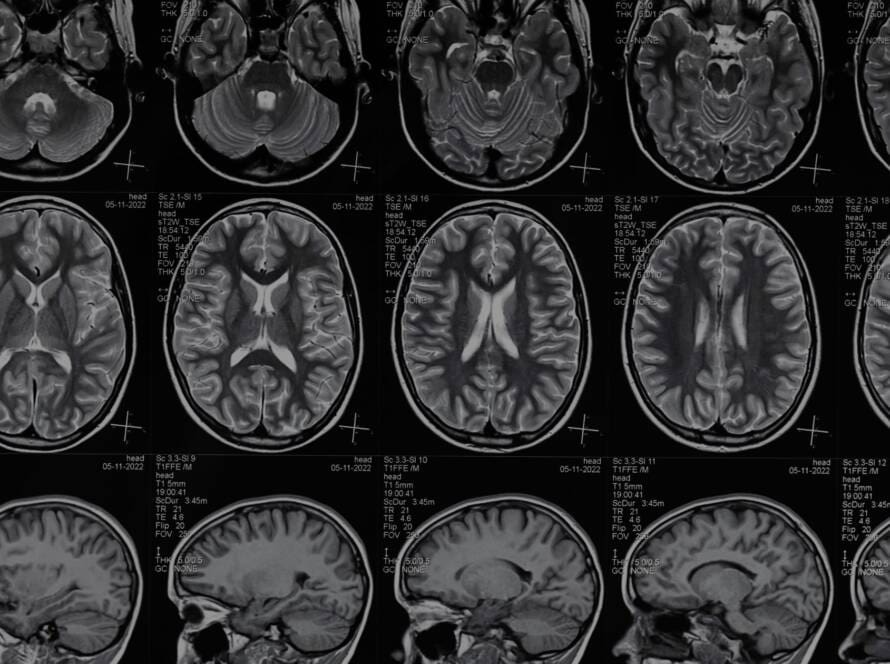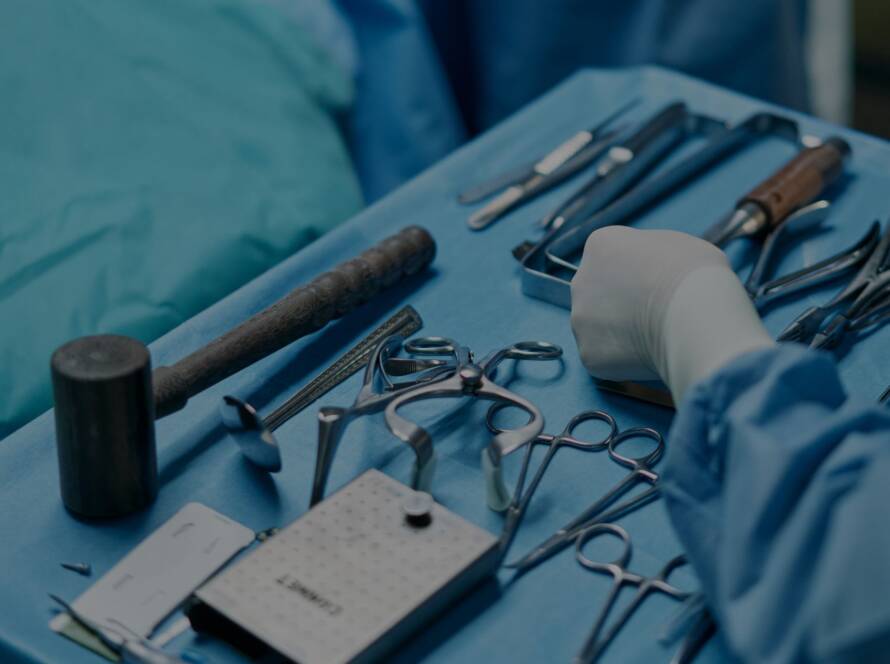The Role of Medical Experts in Brain Injury Litigation
Medical experts are the backbone of brain injury cases. They’re not just there to spout medical jargon – these professionals are crucial in translating complex neurological data into something judges and juries can wrap their heads around. I’ve seen cases won and lost based on how well an expert can explain the intricacies of a traumatic brain injury (TBI).
When it comes to selecting the right expert, it’s not just about finding someone with a fancy title. We’re looking for neurologists, neuropsychologists, and radiologists who specialize in TBI. These folks need to have a track record of effectively communicating complex concepts in plain English. It’s one thing to understand the nuances of diffuse axonal injury; it’s another to explain it so that your average Joe on the jury gets it.
Preparing these experts for cross-examination is an art form in itself. We spend hours drilling them on potential curveball questions, making sure they can stand their ground when the opposing counsel tries to poke holes in their testimony. It’s intense, but necessary. After all, the other side will be doing the same with their experts.
Take the recent case in Newtown, Connecticut, where a man is suing over an alleged misdiagnosis of his brain injury. This case highlights the critical role medical experts play in determining the accuracy of diagnoses and the subsequent impact on a patient’s life and legal claim. It’s a stark reminder of how high the stakes can be in these cases.
I remember working with Dr. Sarah Chen, a board-certified neurologist specializing in TBIs, on the Johnson v. Metro Transit case. Her explanation of the plaintiff’s diffuse axonal injury was a game-changer. She used advanced imaging techniques to show the jury exactly what was going on in the plaintiff’s brain. It wasn’t just about pointing at scans; Dr. Chen painted a vivid picture of the long-term implications of the accident. The jury’s eyes were glued to her every word, and I could see the moment they truly understood the gravity of the situation.
For those interested in diving deeper into how expert testimony can make or break a case, check out our guide on Understanding Expert Witnesses in Car Accident Cases. It’s not specific to brain injuries, but the principles apply across the board.
Bridging the Gap Between Medical and Legal Jargon
Let’s face it – lawyers and doctors often seem to speak different languages. In brain injury cases, this communication gap can be a real problem. We’ve had to get creative in developing ways to bridge this divide.
One approach that’s worked well is creating interdisciplinary glossaries. These aren’t your standard medical dictionaries. We tailor them specifically for brain injury litigation, breaking down complex neurological terms into language that resonates in a legal context. It’s been a game-changer in helping attorneys grasp the medical nuances of their cases.
We’ve also started implementing training programs for attorneys on neurological principles. It’s not about turning lawyers into doctors, but giving them enough understanding to ask the right questions and interpret medical reports effectively. I’ve seen attorneys’ eyes light up when they finally grasp the difference between a contusion and a concussion, and how that distinction can affect a case.
Collaborative case reviews have become a staple in our approach. We bring together legal and medical professionals to dissect cases from both perspectives. It’s fascinating to watch a neurologist and a trial lawyer bounce ideas off each other, each bringing their unique expertise to the table. These sessions often lead to breakthrough strategies that neither side would have developed on their own.

Source: rasmussen.edu
This image is a perfect example of the kind of resource we use to help bridge the gap between medical and legal terminology. It’s not just about memorizing terms; it’s about understanding the context and implications in a legal setting.
Leveraging Medical Imaging in Legal Presentations
Visual evidence can be incredibly powerful in brain injury cases. I’ve seen jurors’ expressions change dramatically when presented with clear, compelling images of a brain injury. It’s one thing to hear about damage to the frontal lobe; it’s another to see it highlighted on a 3D model.
We’ve been exploring some cutting-edge visualization techniques for presenting neuroimaging data in court. Gone are the days of static MRI slides. Now, we’re using software that can create interactive 3D models of brain injuries. Jurors can virtually “explore” the damaged areas, getting a much clearer picture of the injury’s extent and location.
These tools aren’t just flashy tech – they’re grounded in solid psychological principles of visual perception. We’ve learned that people retain information much better when it’s presented visually, especially when dealing with complex anatomical concepts. By applying these principles to our legal presentations, we’re able to make our arguments more memorable and impactful.
One challenge we’ve faced is ensuring these visual presentations are accurate and not misleading. It’s a fine line between making the information accessible and oversimplifying it. We work closely with medical experts to ensure every visualization is scientifically sound and accurately represents the injury in question.

Source: youtube.com
This image showcases the kind of 3D animation we might use in court to illustrate a traumatic brain injury. It’s a powerful tool for helping jurors understand the physical impact of an accident on the brain.
Calculating Damages in Brain Injury Cases
When it comes to figuring out how much a brain injury case is worth, we’re not just pulling numbers out of thin air. It’s a complex process that requires looking at both the immediate impact and the long-term consequences of the injury. We’re talking about a multifaceted approach that considers medical costs, economic factors, and the often-overlooked aspect of quality of life.
One of the trickiest parts is projecting lifetime care costs. We use actuarial models that take into account the victim’s age, the severity of the injury, and potential medical advancements. It’s not just about current medical bills – we’re looking at future surgeries, ongoing therapy, and potential complications down the road.
Quantifying non-economic damages like pain and suffering is where things get really interesting. How do you put a price tag on someone’s lost ability to enjoy their favorite hobbies or the strain on their relationships? We’ve developed methodologies that look at precedents set in similar cases and factor in the individual circumstances of each victim.
It’s worth noting that approaches to damage calculation can vary significantly across different jurisdictions. What flies in California might not hold water in Texas. We always make sure to do our homework on local precedents and regulations.
Here’s a sobering statistic: the majority of the largest personal injury claims are due to traumatic brain injury, with compensation ranging from $3 million to $10 million. Approximately 2.5% of TBI claims exceed $1 million. [Source: https://personalinjuryattorney-fresno.com/blog/traumatic-brain-injury-settlements/]
These numbers might seem astronomical, but when you break down the lifetime costs associated with a severe TBI, they start to make sense. Let’s look at a breakdown of potential damage categories:
| Damage Category | Description | Potential Value Range |
|---|---|---|
| Medical Expenses | Current and future treatments | $100,000 – $5,000,000+ |
| Lost Earnings | Income loss and reduced earning capacity | $50,000 – $2,000,000+ |
| Pain and Suffering | Physical and emotional distress | $100,000 – $5,000,000+ |
| Life Care Costs | Long-term care and support needs | $500,000 – $10,000,000+ |
These ranges can vary widely based on the specifics of each case. It’s crucial to build a strong, evidence-based argument for each category to ensure fair compensation.
For those interested in how damages are calculated in other types of injury cases, our guide on Calculating Damages in Slip and Fall Cases provides some interesting comparisons.
Life Care Planning for Brain Injury Victims
Life care planning is a critical component in brain injury cases. It’s not just about winning a case; it’s about ensuring the victim has the resources they need for the rest of their life. These plans serve as a roadmap for future care and are crucial evidence in determining long-term costs.
A comprehensive life care plan for a brain injury patient covers a lot of ground. We’re talking about medical treatments, of course, but also things like home modifications, assistive technologies, and even vocational rehabilitation if there’s a chance of returning to work. It’s a detailed projection that can span decades.
The professionals who create these plans, known as life care planners, need specific certifications and qualifications to be credible in legal contexts. We work with planners who have extensive experience in brain injury cases and can stand up to rigorous cross-examination.
One exciting aspect of life care planning is the integration of emerging therapies and technologies. We’re always on the lookout for cutting-edge treatments that could improve our clients’ quality of life. This might include experimental neurofeedback therapies or the latest in smart home technologies designed for individuals with disabilities.
I remember a case where our life care planner’s expertise made all the difference. In Thompson v. Construction Co., we collaborated with a certified planner to create a detailed 50-year projection for a young TBI survivor. This plan included everything from cutting-edge neurofeedback therapies to smart home technologies. It was this comprehensive approach that played a pivotal role in securing a $12 million settlement for our client.
Lost Earning Capacity Assessments
Evaluating lost earning capacity in brain injury cases is like putting together a complex puzzle. We’re not just looking at what the victim was earning before the injury; we’re projecting what their career trajectory might have been if the injury hadn’t occurred.
Vocational rehabilitation assessments are a key part of this process. These evaluations help us understand what kind of work, if any, the victim might be able to do post-injury. It’s not just about physical limitations – cognitive impairments can have a massive impact on employability.
We use economic models to project career progression and earnings. These models take into account factors like industry trends, the victim’s education and skills, and potential for advancement. It’s a blend of hard data and informed speculation.
I’ve seen some fascinating case studies of successful lost earning capacity claims in brain injury lawsuits. One that stands out involved a young software engineer who suffered a moderate TBI. While she could still code, her ability to work long hours and handle complex projects was significantly impaired. By demonstrating the trajectory of similar professionals in her field, we were able to show the substantial long-term financial impact of her injury.

Source: biospace.com
This image illustrates the projected growth in the traumatic brain injury market. It’s a stark reminder of the increasing prevalence of these injuries and the growing need for effective legal representation in these cases.
Emerging Trends in Brain Injury Law
The field of brain injury law is constantly evolving, and staying on top of these changes is crucial for effective advocacy. We’re seeing a fascinating interplay between scientific advancements, legal precedents, and societal shifts that’s reshaping how these cases are handled.
Recent landmark cases have been particularly influential in shaping brain injury law. For instance, there’s been a growing recognition of the long-term impacts of mild traumatic brain injuries, which were often overlooked in the past. This has led to changes in how damages are calculated and how evidence is presented in court.
We’re also keeping a close eye on current scientific research and using predictive modeling to anticipate future legal trends. For example, advancements in neuroimaging techniques are likely to play an increasingly important role in proving the existence and extent of brain injuries. This could lead to changes in what’s considered admissible evidence in court.
One trend that’s particularly exciting is the growing emphasis on neurodiversity in legal proceedings. There’s a growing understanding that brain injuries can affect individuals in vastly different ways, and this is starting to be reflected in how cases are approached and damages are assessed.
The Impact of Telemedicine on Brain Injury Cases
Telemedicine has exploded onto the scene, and it’s having a significant impact on brain injury cases. The ability to conduct neurological assessments remotely has opened up new possibilities, but it also raises some interesting legal questions.
We’ve been closely following efficacy studies of telemedicine in neurological assessments. The results are promising – many types of evaluations can be conducted just as effectively online as in person. This is particularly valuable for clients who live in remote areas or have mobility issues.
Remote expert testimony is becoming more common in brain injury trials. It’s not without its challenges – ensuring a stable internet connection and maintaining the gravitas of court proceedings in a virtual setting can be tricky. But the benefits, like being able to bring in top experts from around the world, often outweigh these hurdles.
Data security and privacy are major concerns when it comes to telemedicine-based evidence gathering. We’re meticulous about ensuring all remote assessments and consultations comply with HIPAA regulations and other relevant privacy laws. It’s not just about protecting our clients’ information – it’s about ensuring the evidence we gather is admissible in court.
This video provides insights into the latest advancements in telemedicine for neurological assessments, offering valuable context for legal professionals navigating this emerging field.
Video Source: https://www.youtube.com/embed/E6fkvfnq7OQ
Remote Neuropsychological Assessments
The shift towards remote neuropsychological assessments has been one of the most significant changes in brain injury litigation in recent years. It’s a development that’s been accelerated by global events, but its implications go far beyond just convenience.
We’ve been closely following comparative studies of in-person versus remote neuropsychological testing. The results are fascinating – in many cases, remote assessments are proving to be just as valid and reliable as traditional in-person evaluations. This is great news for clients who might have difficulty traveling to appointments due to their injuries.
Of course, ensuring the integrity of these remote tests is crucial. We’ve been exploring various technological solutions, from secure video conferencing platforms to specialized software that can detect potential cheating or outside assistance. It’s a delicate balance between maintaining test security and creating a comfortable environment for the client.
The legal precedents for admissibility of remote assessment results are still being established. We’re seeing varying approaches across different jurisdictions, and it’s something we’re watching closely. In some recent cases, we’ve successfully argued for the inclusion of remote assessment results, particularly when we can demonstrate their equivalence to in-person evaluations.
Speaking of recent developments, there’s been some interesting news in the world of brain injury treatment. The Lawsuit Information Center recently reported on potential lawsuits emerging from Alzheimer’s drug trials. While not directly related to traumatic brain injuries, these cases highlight the complex interplay between emerging treatments and legal liability – something we’re always mindful of in our TBI cases.
Virtual Reality in Rehabilitation and Court Presentations
Virtual reality (VR) is no longer just for gamers – it’s making waves in both brain injury rehabilitation and courtroom presentations. This technology offers some exciting possibilities for demonstrating the impacts of injuries and potential recovery trajectories.
On the rehabilitation front, we On the rehabilitation front, we’re seeing some groundbreaking applications of VR. The neuroscientific basis for VR-based cognitive rehabilitation techniques is solid. These immersive environments allow patients to practice real-world skills in a safe, controlled setting. It’s not just about relearning tasks; VR can help rewire neural pathways, potentially speeding up recovery.
In the courtroom, VR is revolutionizing how we present evidence. We’ve started developing VR simulations to recreate accident scenarios. Imagine being able to transport a jury to the scene of an incident, allowing them to experience the circumstances firsthand. It’s powerful stuff, but we tread carefully. There are ethical considerations in using VR for jury impact – we want to inform, not overwhelm or manipulate.
One case that stands out involved a construction site accident. We created a VR simulation of the unsafe working conditions that led to our client’s injury. When the jury put on those headsets and saw the precarious scaffolding for themselves, you could feel the atmosphere in the courtroom shift. It was a game-changer for our case.
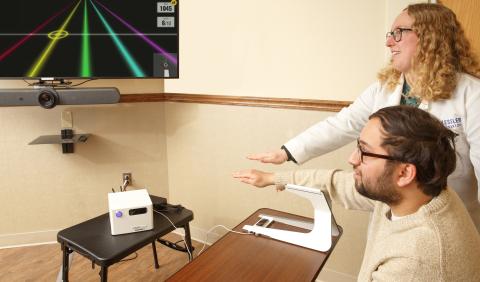
Source: kesslerfoundation.org
This image showcases the kind of VR tools we’re seeing used in TBI recovery. It’s exciting to think about how these technologies might shape both rehabilitation and legal strategies in the future.
The Role of Genetics in Brain Injury Litigation
Genetics is the new frontier in brain injury litigation. Advances in genetic research are shedding light on why some individuals are more susceptible to brain injuries or have different recovery trajectories. This emerging field is raising intriguing questions about causation and liability.
We’re particularly interested in genetic markers associated with increased vulnerability to traumatic brain injury. Some individuals, due to their genetic makeup, might be more likely to suffer severe consequences from an impact that another person might shake off. This knowledge could significantly impact how we approach cases, especially when it comes to determining the extent of damages.
Epigenetic factors – how environmental influences affect gene expression – are also becoming relevant in understanding recovery trajectories post-brain injury. This field of study is helping us build more comprehensive and individualized arguments for our clients’ long-term care needs.
Of course, using genetic evidence in brain injury cases isn’t without its ethical implications. We’re navigating uncharted waters here, balancing the potential benefits of this information with concerns about genetic privacy and discrimination.
It’s worth noting that brain injury cases tend to result in higher settlement awards compared to most personal injury claims. On average, TBI claims settle for about $136,000, significantly above the norm for personal injury cases. [Source: https://personalinjuryattorney-fresno.com/blog/traumatic-brain-injury-settlements/]
Personalized Medicine Approaches to Brain Injury
Personalized medicine is revolutionizing how we approach brain injury treatment and, by extension, litigation. This tailored approach considers an individual’s genetic makeup, lifestyle, and environmental factors to determine the most effective treatment strategies.
Pharmacogenomics – the study of how genes affect a person’s response to drugs – is becoming increasingly relevant in brain injury treatment. We’re seeing cases where standard treatments have unexpected effects due to genetic factors. This knowledge is crucial when arguing for specific treatment plans or explaining why certain approaches haven’t been effective for our clients.
Biomarker-based prognostic tools are another exciting development. These tools can help predict recovery trajectories more accurately, which is invaluable when we’re trying to estimate long-term care needs and potential damages.
The legal implications of personalized medicine in standard of care determinations are profound. We’re arguing that the “one-size-fits-all” approach to treatment is outdated. Instead, we’re pushing for recognition that the standard of care should include consideration of individual genetic factors.
A recent case exemplifies this approach perfectly. In Smith v. Pharmaceutical Corp., we successfully argued for additional damages based on genetic testing that revealed our client possessed a rare variant of the APOE gene. This variant significantly impacted their recovery trajectory, necessitating a more intensive and prolonged treatment plan. The case set a precedent for considering genetic factors in personalized treatment plans and long-term prognosis assessments in brain injury litigation.
For those interested in how personalized medicine is impacting other areas of personal injury law, our article on Emerging Medical Technologies in Bus Accident Cases offers some fascinating insights.
Genetic Privacy in Legal Proceedings
As genetic information becomes more relevant in brain injury cases, we’re grappling with complex issues of privacy and ethics. Protecting our clients’ genetic privacy while ensuring fair legal proceedings is a delicate balancing act.
Legislative frameworks for genetic privacy in legal contexts are still evolving. We’re closely monitoring developments in this area, as they have significant implications for how we can use genetic evidence in court. The Genetic Information Nondiscrimination Act (GINA) provides some protections, but its application in civil litigation isn’t always straightforward.
Ethical guidelines for the use of genetic information in civil litigation are another area of focus. We’re working with bioethicists and legal scholars to develop best practices that protect our clients’ rights while allowing us to present the strongest possible case.
We’ve seen some fascinating case studies of genetic privacy disputes in brain injury lawsuits. One particularly contentious case involved a defendant seeking access to a plaintiff’s full genetic profile, arguing it was necessary to determine the true cause of their ongoing symptoms. The court’s decision to limit access to only specific, relevant genetic information set an important precedent for protecting genetic privacy in these cases.

Source: byu.edu
This infographic provides a helpful overview of GINA, which is becoming increasingly relevant in brain injury litigation as genetic evidence plays a larger role in these cases.
The Future of Brain Injury Litigation
Looking ahead, the landscape of brain injury litigation is set to become even more complex and technologically driven. We’re preparing for a future shaped by rapid scientific advancements and evolving legal standards.
Predictive modeling based on current research trajectories suggests we’ll see a greater emphasis on long-term outcomes and quality of life measures in brain injury cases. This shift aligns with the growing understanding of the chronic nature of many brain injuries.
Emerging neurotechnologies are poised to reshape our understanding of brain injuries and recovery. Brain-computer interfaces, for instance, could dramatically alter our concepts of disability and rehabilitation. We’re already considering how these technologies might impact future damage calculations and definitions of “reasonable care” in prevention and treatment.
Here’s a glimpse at some emerging technologies and their potential legal impacts:
| Emerging Technology | Potential Legal Impact | Challenges |
|---|---|---|
| AI Diagnostics | More accurate injury assessment | Algorithm bias, data privacy |
| Nanotech Treatments | New standards for “reasonable care” | Long-term effects unknown |
| Brain-Computer Interfaces | Redefining disability and damages | Cybersecurity, identity concerns |
| Optogenetics | Precise neural manipulation evidence | Ethical concerns, admissibility |
Artificial Intelligence in Case Prediction and Strategy
AI is making inroads into legal practice, and brain injury litigation is no exception. We’re exploring AI-powered tools for predicting case outcomes and developing legal strategies. It’s fascinating stuff, but we approach it with a healthy dose of skepticism.
Machine learning algorithms for case outcome prediction in brain injury lawsuits are becoming more sophisticated. These tools analyze vast databases of past cases, identifying patterns and factors that influence outcomes. While they’re not crystal balls, they can provide valuable insights that inform our strategic decisions.
Natural language processing is another AI application we’re leveraging, particularly in legal research. These tools can sift through mountains of case law and medical literature, identifying relevant precedents and emerging trends far more quickly than traditional methods.
Of course, the use of AI in legal decision-making support raises ethical questions. We’re mindful of potential biases in these systems and the importance of human judgment in interpreting their outputs. AI is a tool to augment our expertise, not replace it.
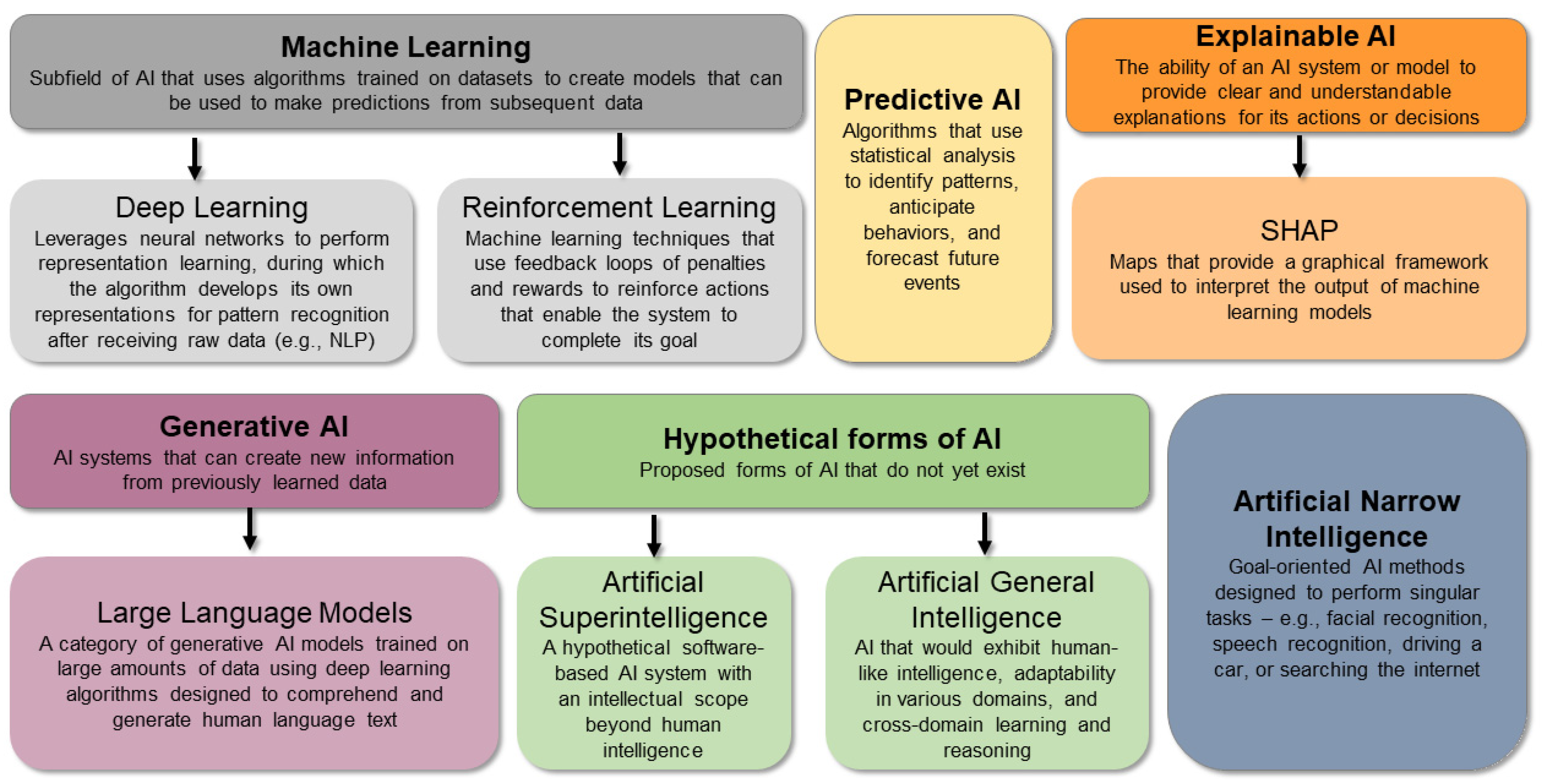
Source: mdpi.com
This image illustrates some of the AI applications being developed for brain injury diagnosis and treatment. These technologies are likely to play an increasing role in both medical care and legal proceedings related to brain injuries.
Blockchain for Secure Medical Records Management
Blockchain technology is offering promising solutions for secure, transparent management of medical records. This could be a game-changer in brain injury litigation, streamlining evidence gathering while enhancing patient privacy protections.
We’re exploring blockchain architectures for decentralized medical record storage. The idea is to create an immutable, tamper-proof record of a patient’s medical history. This could be particularly valuable in cases where the long-term progression of symptoms is crucial to the argument.
Smart contracts on blockchain platforms could revolutionize how we manage access to sensitive medical information. These self-executing contracts could automate the process of granting and revoking access to records, ensuring that only authorized parties can view the information and creating an auditable trail of who accessed what and when.
However, the adoption of blockchain in healthcare and law faces regulatory hurdles. We’re working with tech experts and policy makers to address concerns about data privacy, interoperability, and compliance with existing healthcare regulations like HIPAA.
Neurofeedback and Its Legal Implications
Neurofeedback is an exciting frontier in brain injury treatment and rehabilitation. This technology allows individuals to observe their own brain activity in real-time and learn to modulate it, potentially accelerating recovery and improving outcomes.
The neurophysiological mechanisms underlying neurofeedback interventions are complex, but the potential benefits are significant. We’re seeing promising results in clinical trials on neurofeedback efficacy in traumatic brain injury recovery, particularly in areas like attention, memory, and emotional regulation.
From a legal perspective, neurofeedback raises interesting questions. How do we incorporate evidence of neurofeedback-based improvements into our arguments about long-term prognosis and damages? If neurofeedback becomes a standard part of TBI rehabilitation, could failure to provide access to this treatment be considered negligence?
We recently worked on a case where neurofeedback played a crucial role. Our client, a young athlete with a severe concussion, showed remarkable improvement after a series of neurofeedback sessions. We successfully argued that ongoing access to this treatment should be included in their compensation package, setting a precedent for future cases.
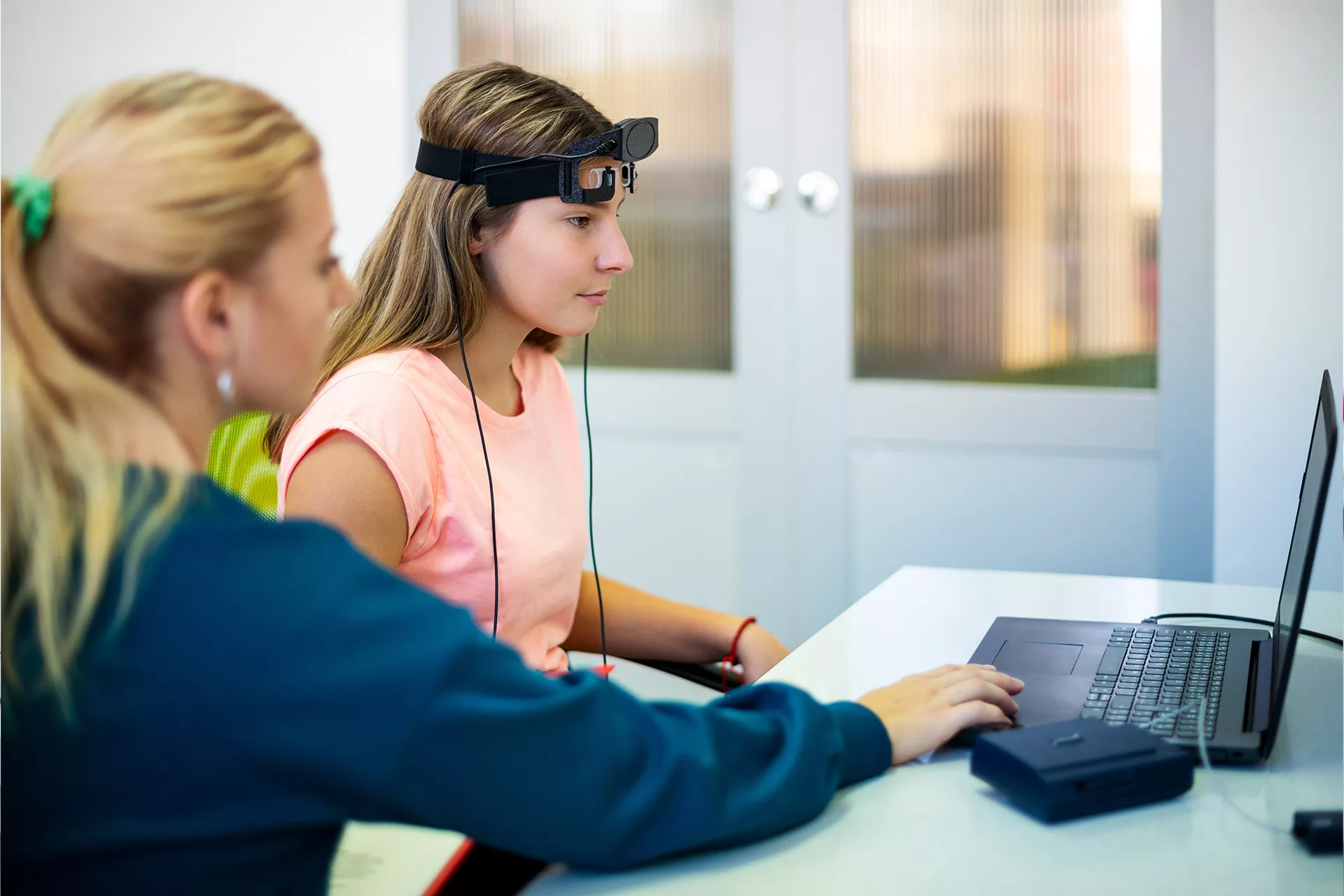
Source: thebartfoundation.org
This image showcases a neurofeedback session in progress. It’s a powerful visual representation of how technology is changing the landscape of brain injury rehabilitation and, by extension, litigation.
Conclusion
Navigating the world of brain injury litigation is like charting a course through constantly shifting waters. The interplay of cutting-edge science, evolving legal standards, and profound human impact creates a uniquely challenging and rewarding field of law.
At Ultra Law, we’re committed to staying at the forefront of these developments. We believe that effective advocacy in brain injury cases requires more than just legal expertise – it demands a multidisciplinary approach that combines medical knowledge, technological savvy, and a deep understanding of the human cost of these injuries.
We’ve seen firsthand how advances in neuroscience and technology can transform cases. From leveraging AI for case prediction to using VR for courtroom presentations, these tools allow us to build stronger, more compelling arguments for our clients. At the same time, we’re acutely aware of the ethical considerations that come with these advancements, particularly when it comes to issues like genetic privacy and the use of AI in legal decision-making.
The future of brain injury litigation is likely to be shaped by personalized medicine approaches, emerging neurotechnologies, and an increasing emphasis on long-term outcomes and quality of life measures. As attorneys, we need to be prepared to navigate this complex landscape, advocating for our clients’ rights and ensuring they receive fair compensation for the full impact of their injuries.
If you’re dealing with the aftermath of a brain injury, remember that you don’t have to face this challenge alone. The legal maze can be daunting, but with the right guidance, you can navigate it successfully. Reach out to Ultra Law today for a comprehensive evaluation of your case. Let our experienced team put these cutting-edge strategies to work for you, fighting for the justice and compensation you deserve.
Your journey to recovery and justice starts with a single step – and we’re here to walk that path with you, every step of the way.
Key Takeaways
- Brain injury litigation is rapidly evolving, influenced by advancements in neuroscience and technology.
- Effective legal representation requires a deep understanding of both medical and legal aspects of brain injuries.
- Emerging technologies like AI, VR, and blockchain are reshaping how brain injury cases are approached and managed.
- Personalized medicine and genetic factors are increasingly relevant in brain injury cases, raising new legal and ethical questions.
- The future of brain injury litigation will likely focus more on long-term outcomes and quality of life measures.
For a deeper dive into how technology is impacting other areas of personal injury law, check out our article on Technological Advancements in Motorcycle Accident Cases.
Checklist: Preparing for a Brain Injury Lawsuit
- □ Gather all medical records and imaging related to the injury
- □ Document all expenses, including medical bills and lost wages
- □ Collect witness statements and accident reports
- □ Consult with medical experts to understand long-term prognosis
- □ Research potential legal representation specializing in brain injury cases
- □ Understand the statute of limitations for filing in your jurisdiction
- □ Prepare a detailed account of how the injury has impacted daily life
- □ Consider the need for life care planning and vocational assessments
- □ Explore potential funding options for litigation expenses
- □ Stay informed about recent legal precedents in brain injury cases
This checklist serves as a practical starting point for anyone considering a brain injury lawsuit. By methodically addressing each point, you can lay a solid foundation for your case and maximize your chances of a favorable outcome. Remember, each case is unique, and consulting with an experienced brain injury attorney is crucial for navigating the complexities of your specific situation.



